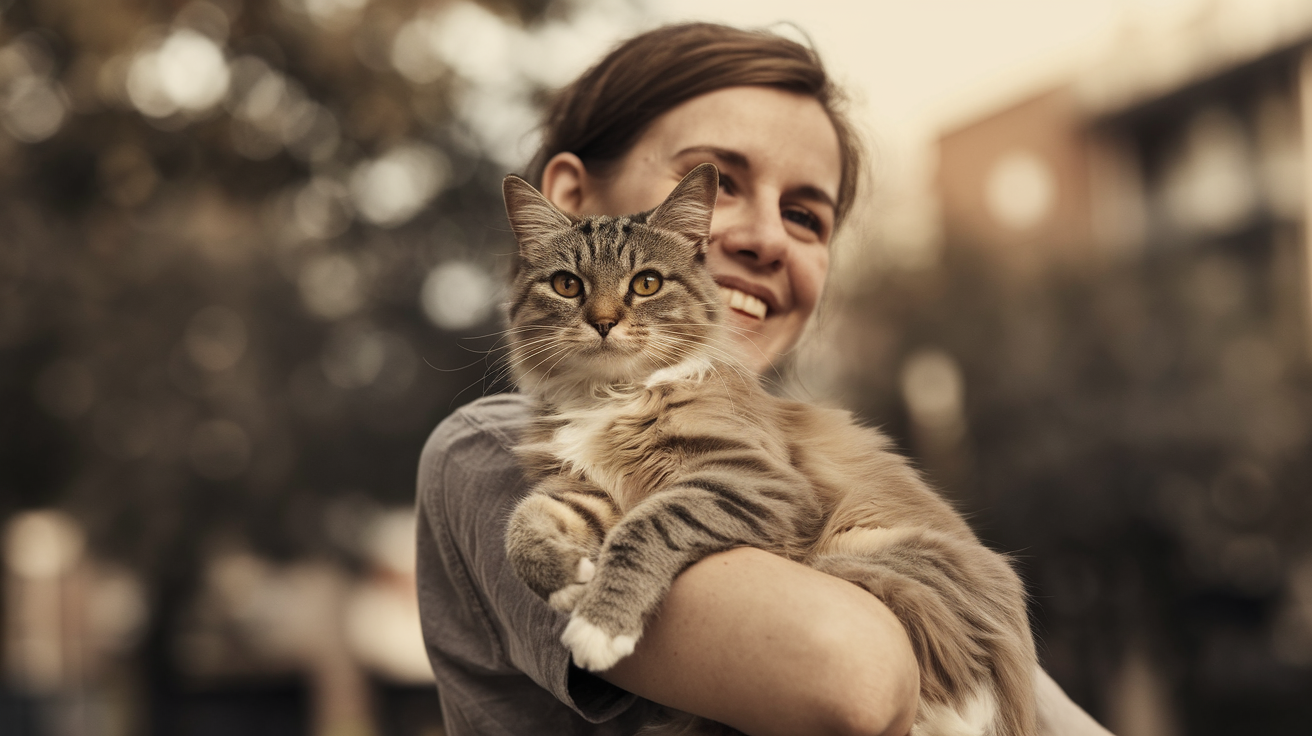Pet insurance for cats has become an increasingly popular topic among cat owners who want to give their feline friends the best possible care. With rising veterinary costs, unexpected illnesses, and the occasional mischief our cats get into, pet insurance can seem like a smart investment. But is it really worth it? This guide will break down the essentials, so you can make an informed choice about whether pet insurance is right for your cat.
Why Consider Pet Insurance for Cats?
Cats are known for their independence, but they’re not immune to health issues. From curious kittens swallowing things they shouldn’t to older cats facing chronic conditions like kidney disease, every stage of a cat's life can bring different health concerns. Vet bills for these issues can quickly add up, with some treatments costing thousands of dollars.
Pet insurance aims to help by covering a portion of these veterinary expenses. Like health insurance for humans, pet insurance for cats can offset unexpected medical costs, offering peace of mind.
But here’s the question every cat parent asks: Is pet insurance really worth the cost?
Let’s dive into what pet insurance typically covers, what it doesn’t, and how to decide if it’s worth it for your furry friend.
What Does Pet Insurance for Cats Cover?
1. Accidents and Injuries
Cat insurance policies usually cover accidents and injuries, which can be a big help if your cat is prone to exploring and getting into trouble. Common accidents covered include:
- Fractures and broken bones
- Cuts, scrapes, or injuries from fights with other animals
- Ingesting foreign objects
Coverage for these types of incidents can be especially useful for outdoor cats or young kittens who tend to get into everything.
2. Illnesses and Diseases
Many policies cover common feline illnesses such as:
- Respiratory infections
- Urinary tract infections
- Diabetes and other chronic illnesses
Since veterinary care for diseases like cancer or chronic kidney disease can be quite costly, having insurance that partially or fully covers treatment can ease the financial burden.
3. Surgeries and Hospitalizations
If your cat needs surgery, the costs can be substantial. Most insurance policies include coverage for:
- Surgeries required to treat an injury or illness
- Hospitalization fees, which can add up quickly for extended stays
4. Diagnostic Tests
From blood tests to X-rays and ultrasounds, diagnostic procedures can be expensive. Many pet insurance plans include diagnostic test coverage, allowing you to afford the tests your vet recommends without hesitation.
5. Medications and Therapies
Prescription medications for ongoing conditions are often covered under pet insurance. Some plans even cover alternative treatments, such as acupuncture or physical therapy, especially if they’re prescribed by a vet.
What Doesn’t Pet Insurance Cover?
1. Pre-existing Conditions
Pet insurance companies usually don’t cover pre-existing conditions, meaning any illness or injury your cat had before the policy began won’t be covered. Some insurers may cover pre-existing conditions after a specific time period, but this varies by policy.
2. Routine and Preventive Care
Routine care like annual check-ups, vaccinations, flea treatments, and dental cleanings aren’t always covered unless you purchase an add-on wellness plan. For many, this adds extra costs without significant savings, as routine care expenses are relatively predictable.
3. Breed-Specific Conditions
Some insurance companies may exclude conditions that are common to certain cat breeds. For example, Persian cats are prone to respiratory issues, and certain policies may not cover treatment for these hereditary problems.
4. Cosmetic Procedures and Elective Surgeries
Insurance won’t cover elective or non-essential procedures, such as declawing or cosmetic surgeries, as they aren’t considered medically necessary.
How Much Does Pet Insurance for Cats Cost?
The cost of pet insurance for cats varies based on factors like the cat’s age, breed, location, and the level of coverage you choose. Here’s a general breakdown to give you an idea of what to expect.
1. Monthly Premiums
- Average Cost: Around $15 to $30 per month for basic accident-only policies.
- Comprehensive Plans: Comprehensive policies that cover both accidents and illnesses range from $25 to $60 per month, depending on the level of coverage.
2. Deductibles
Like most insurance policies, pet insurance requires a deductible, which is the amount you pay out of pocket before coverage kicks in. Deductibles for pet insurance range from $100 to $500 or more annually. A higher deductible generally means lower monthly premiums, and vice versa.
3. Reimbursement Rates
Most policies reimburse you for a percentage of the vet bill, typically 70%, 80%, or 90%. Higher reimbursement rates cost more in premiums but cover more of the vet bill, reducing out-of-pocket expenses.
4. Annual Limits
Some policies have an annual cap on payouts, ranging from $5,000 to unlimited coverage. If your cat needs extensive care, hitting the cap could mean paying out-of-pocket for any remaining bills.
Pros of Pet Insurance for Cats
Financial Peace of MindWith pet insurance, you’re less likely to face tough choices about your cat’s care due to financial constraints. If an unexpected illness or injury occurs, having insurance can significantly reduce the burden of sudden expenses.
Access to Quality Care
Knowing that part of the cost is covered might allow you to pursue higher-quality or specialty care that you might otherwise hesitate to afford.
Customizable Plans
Many pet insurance providers allow you to adjust your deductible, reimbursement rate, and coverage level to create a plan that fits your budget and needs.
Comprehensive Coverage
For pet owners who want broad coverage, comprehensive plans can cover most vet costs outside of routine care, which can add up to big savings over time.
Cons of Pet Insurance for Cats
For a generally healthy cat, monthly premiums may feel like an unnecessary expense if your pet doesn’t have any health issues.
Doesn’t Cover Routine Care (Without Add-Ons)
While routine check-ups and vaccinations aren’t usually covered, some companies offer wellness add-ons, which can be an additional cost on top of regular premiums.
Exclusions on Pre-existing Conditions
If your cat already has a chronic illness, pet insurance won’t cover treatment for that specific condition, which may limit the benefits you receive.
Age Restrictions
Older cats may be harder to insure, as some providers place age restrictions on new policies or charge significantly higher premiums for older pets.
Is Pet Insurance Worth It for Cats?
Pet insurance can be worth it, but it depends on several factors, including your cat’s health history, breed, lifestyle, and your financial situation. Here are some considerations to help you decide:
Your Cat’s Age and Health
Young and healthy cats generally have lower insurance premiums. Getting insurance when your cat is young can also help you avoid exclusions on pre-existing conditions.
Your Financial Flexibility
If you have enough savings to cover unexpected vet bills, you might feel comfortable skipping pet insurance. However, if an unexpected $2,000 bill would be a stretch, insurance could be a valuable safety net.
Risk Factors
Outdoor cats and those with a genetic predisposition to certain illnesses may benefit more from insurance. The same goes for high-energy kittens that may be more prone to accidents.
Frequently Asked Questions (FAQs)
1. Can I get pet insurance for my older cat?
Yes, but options can be limited, and premiums may be higher. Some companies may not offer coverage for cats over a certain age, while others might have restrictions on certain benefits for older pets.
2. Does pet insurance cover spaying or neutering?
Generally, no. Spaying and neutering are considered routine procedures and are typically not covered by standard pet insurance policies. Some companies offer wellness plans that may cover these procedures.
3. Is pet insurance worth it for indoor cats?
Indoor cats face fewer risks than outdoor cats, which can mean fewer injuries and illnesses. However, indoor cats can still develop chronic illnesses, making pet insurance potentially beneficial.
4. Can I use any veterinarian with pet insurance?
Most pet insurance policies allow you to choose any licensed vet, though it’s best to verify with your provider.
Pet insurance for cats can be a worthwhile investment for many pet owners, especially those looking to manage the high costs of unexpected health issues. By carefully considering the coverage, costs, and potential benefits, you can decide whether pet insurance aligns with your needs and your cat’s lifestyle. Ultimately, the best insurance choice is the one that gives you peace of mind and helps you provide the best care for your beloved feline companion.












